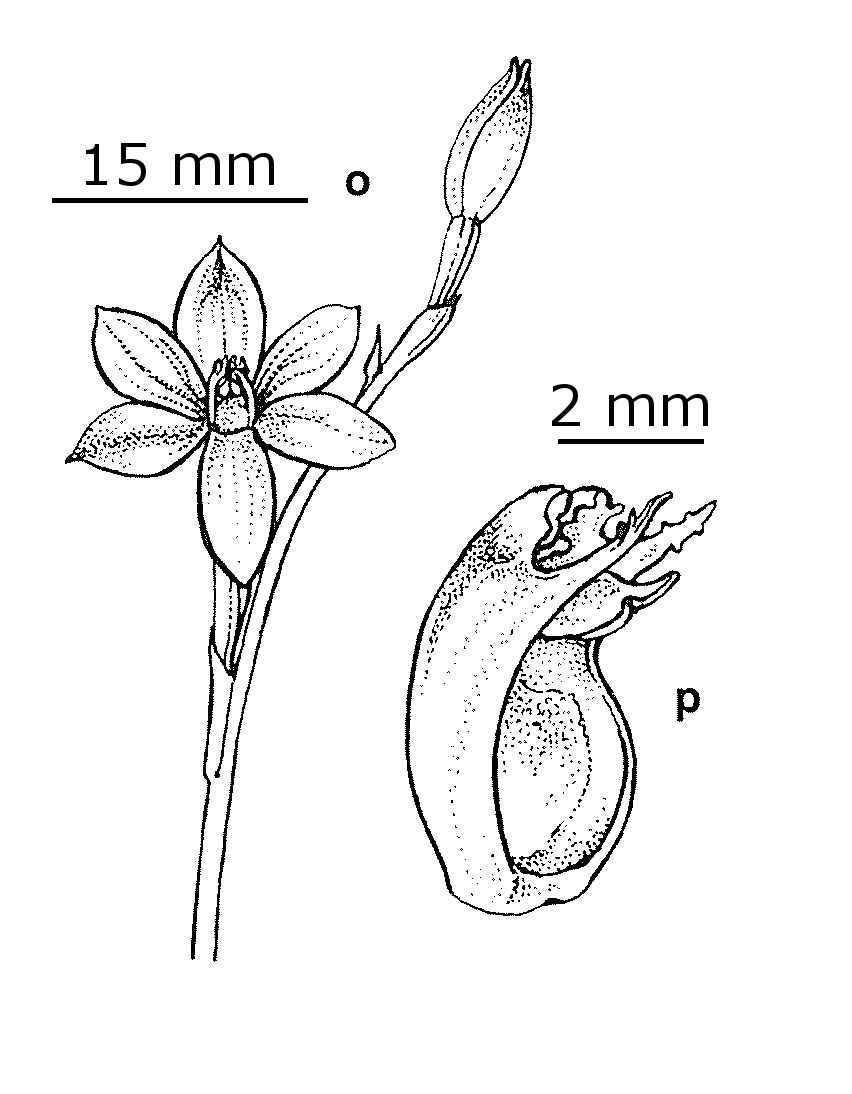Thelymitra alpicola
JeanesFlowering stem erect, straight, 15–50 cm tall, 1–3.7 mm diam., straw-coloured to purplish. Leaf linear to linear-lanceolate, attenuate, 6–25 cm long, 4–13 mm wide, fleshy to leathery, canaliculate to conduplicate, ribbed abaxially, sheathing at base, dark green with a purplish base. Inflorescence 1–6-flowered, open. Sterile bracts usually 2, rarely 1 or 3. Perianth segments lanceolate to ovate, 8–14(–16) mm long, deep purplish blue with darker longitudinal striations, opening freely on warm days. Column slender, 4.6–6.5 mm long, purplish; mid-lobe slightly hooding the anther, often bilobed, margin irregular, sometimes with a central tooth, somewhat sinuate, dorsal surface rugulose, reddish brown to almost black, apex yellow or pinkish; lateral lobes parallel or weakly incurved at apices, 1–2.2 mm long, fleshy, obliquely erect or porrect, pink or brownish at base, faces smooth, margins often shallowly and irregularly erose, apex cream to yellow. Anther inserted towards apex of column, with a prominent entire or emarginate beak. Flowers Oct.–Jan.
EGU, Strz, MonT, VAlp. Also NSW. Grows in alpine, sub-alpine and montane heathlands, in moist areas around the edges of sphagnum bogs, beside streams or in soaks and swamps. Soils are generally dark sandy, clayey or peaty loams.
The population in the Strzelecki Ranges Victoria is noteworthy for its disjunction and low altitude.
Thelymitra alpicola can be distinguished from T. incurva by its deep purplish blue, strongly striated perianth and more or less parallel (sometimes incurved at apices), often narrow, shallowly erose, lateral lobes on the column. The two species also frequent different habitats.
 Spinning
Spinning

